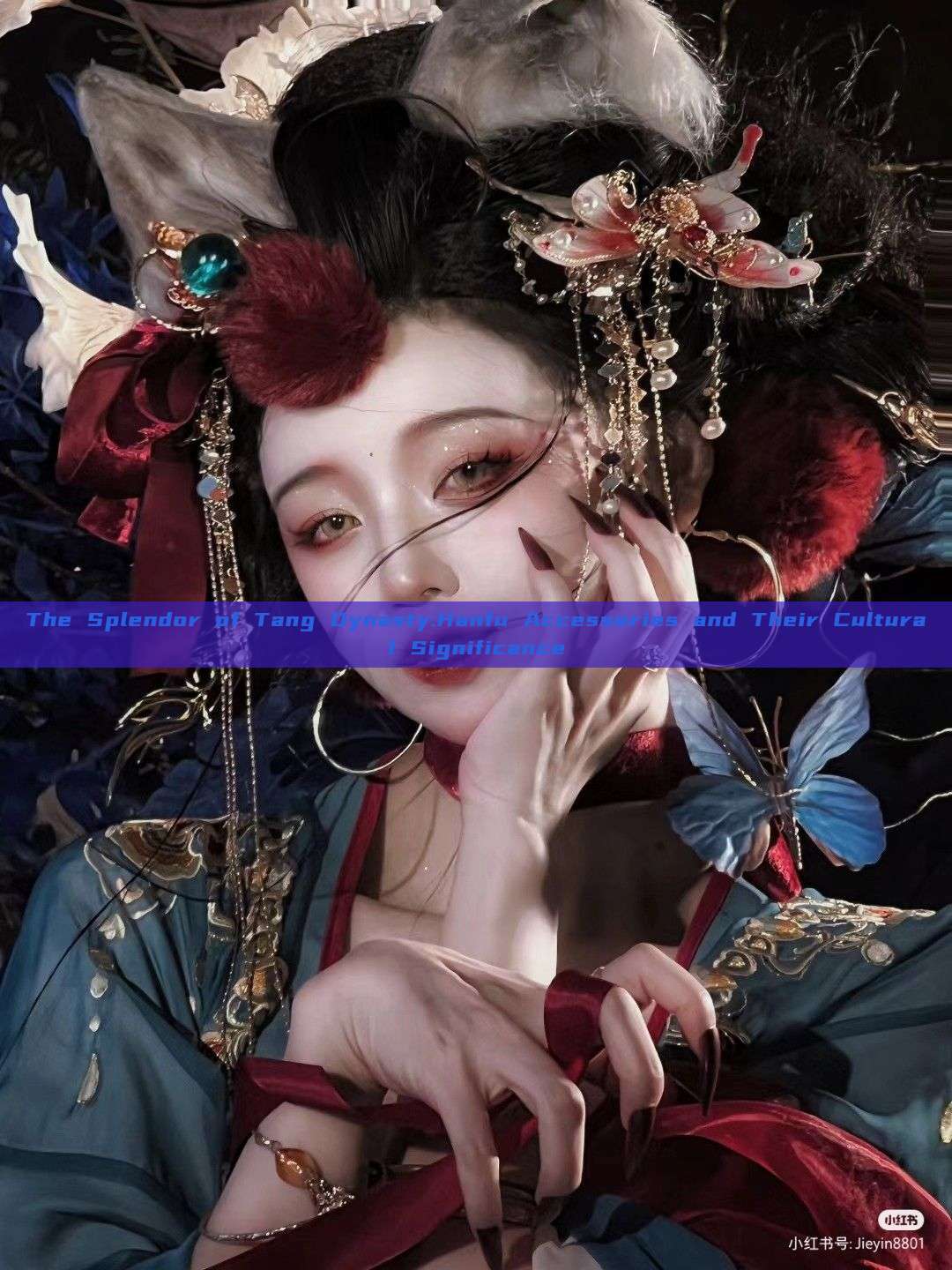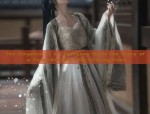The Splendor of Tang Dynasty:Hanfu Accessories and Their Cultural Significance
In the dawn of the Tang Dynasty, a period in Chinese history renowned for its prosperity and cultural richness, the Hanfu attire and its accompanying accessories were not just expressions of fashion but also symbols of status and cultural identity. The art of dressing up in Hanfu, which originated in the Han ethnic group, reached its peak during this era, reflecting the sophistication and elegance of the Tang civilization.

The Tang Dynasty (618-907 AD) was a time of remarkable cultural exchange and fusion, where the beauty of Hanfu was further enriched by diverse influences from around the world. One could see this influence in the intricate designs of the clothing, as well as in the diverse range of accessories that accompanied them. These accessories not only enhanced the beauty of the attire but also served as a medium to showcase the wearer's status and taste.
One could identify the wearer's social standing and status through the type of accessories he or she wore. The nobility and high-ranking officials often wore jewelry made of precious metals like gold and silver, adorned with gemstones and intricate carvings. These pieces were not just for show but also had a symbolic significance, often representing power, honor, and good fortune.
The commoners, on the other hand, wore more modest jewelry made of bronze or wood, often with simpler designs that still reflected the elegance of Tang culture. These accessories were often paired with their traditional Hanfu attire, which was characterized by its loose-fitting, graceful lines and vibrant colors.
Another important aspect of Hanfu accessories was the role they played in court culture and ceremonial occasions. During weddings, festivals, and other significant events, the accessories worn by both men and women were highly elaborate and had a deep cultural significance. For instance, fans made of silk or bamboo were not just used for cooling but also served as a medium to show one's social status and tastes. These fans were often adorned with beautiful patterns and designs that reflected the wearer's personality and status.
In addition to jewelry and fans, other common Hanfu accessories included headpieces like the hairpin and headband, which were often adorned with flowers or precious stones. These headpieces not only served to enhance the wearer's beauty but also had a symbolic significance, often representing purity or honor.
The shoes worn by Hanfu-clad individuals were also highly significant. Often made of silk or leather, these shoes were intricately designed with patterns that reflected the wearer's status and taste. The design of these shoes often featured intricate patterns and designs that were influenced by both traditional Chinese culture as well as foreign influences.
In conclusion, the accessories worn during the Tang Dynasty not only enhanced the beauty of Hanfu attire but also served as a medium to showcase the wearer's status, taste, and cultural identity. These accessories reflected not just fashion but also the intricate blend of cultures that was characteristic of this era. They were not just pieces of jewelry or clothing; they were symbols of an era that was rich in history, culture, and fashion.
Today, Hanfu accessories have regained popularity not just in China but also worldwide, as more people appreciate the beauty and richness of traditional Chinese culture. As we look back at the splendor of the Tang Dynasty and its rich cultural heritage, it is fascinating to see how Hanfu accessories continue to captivate our imagination and inspire us today.

 Previous Post
Previous Post



